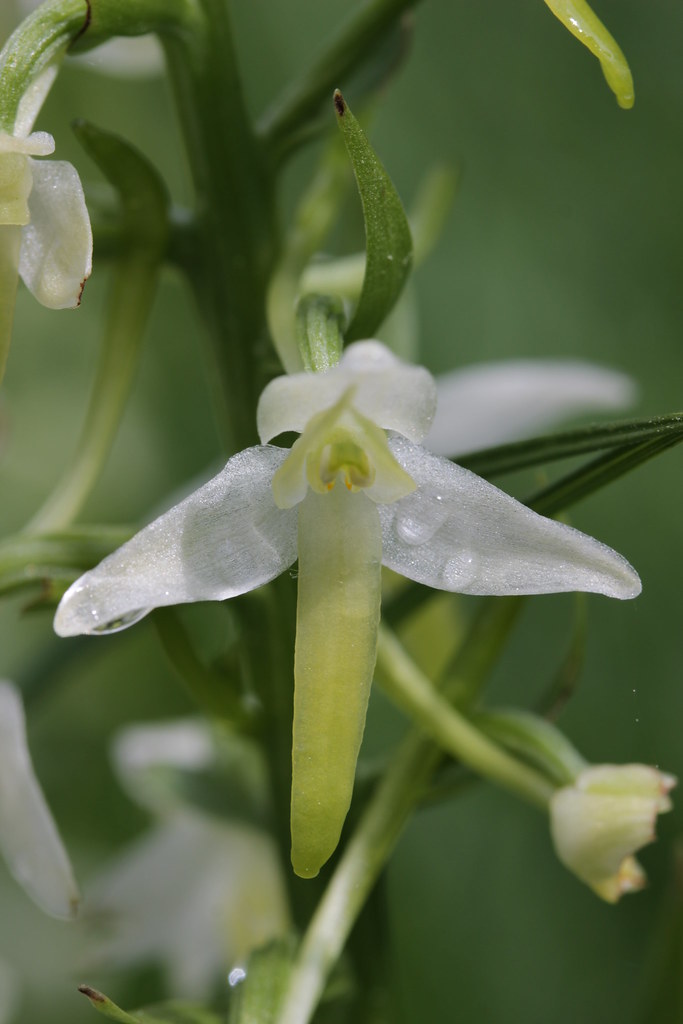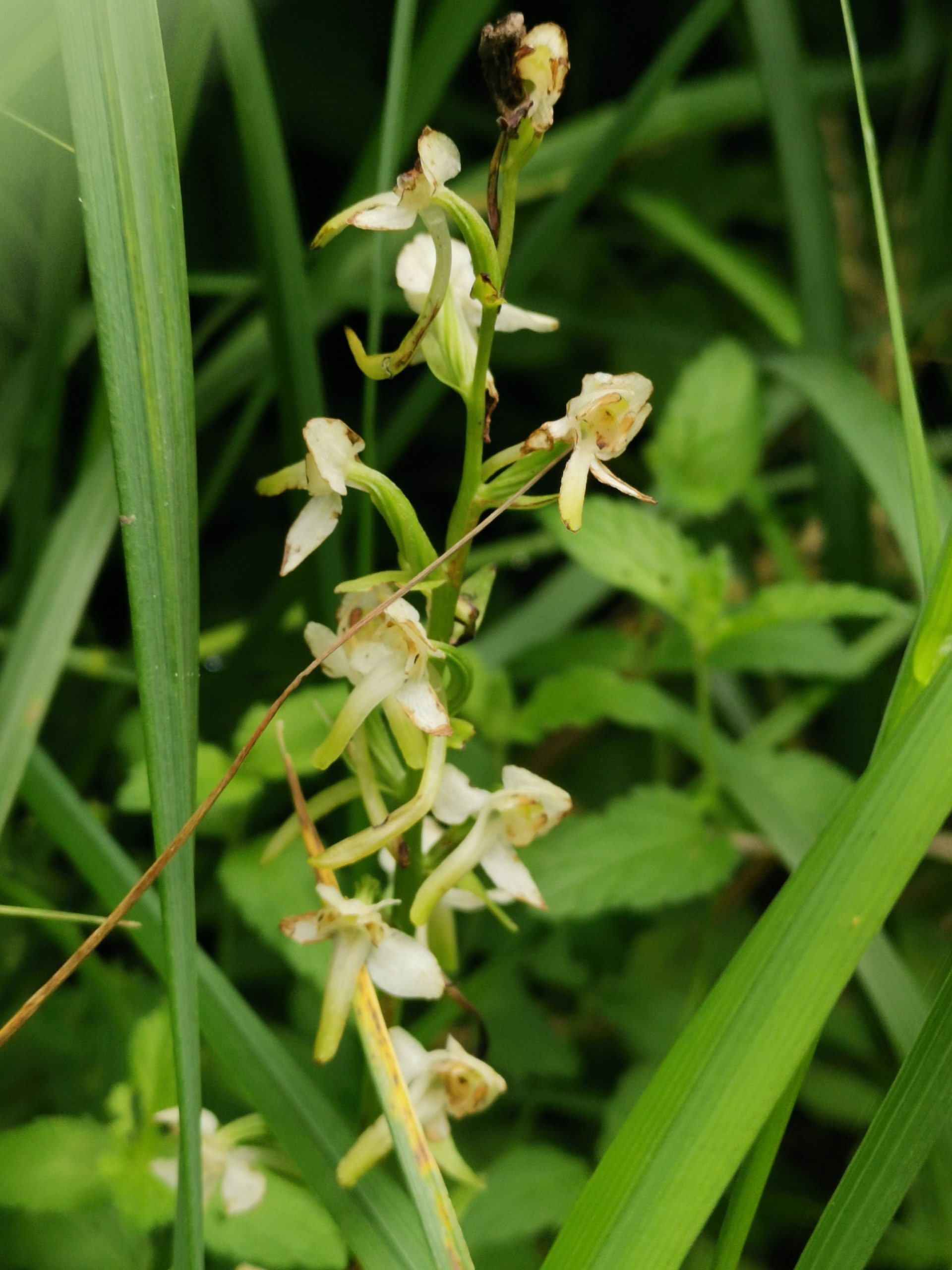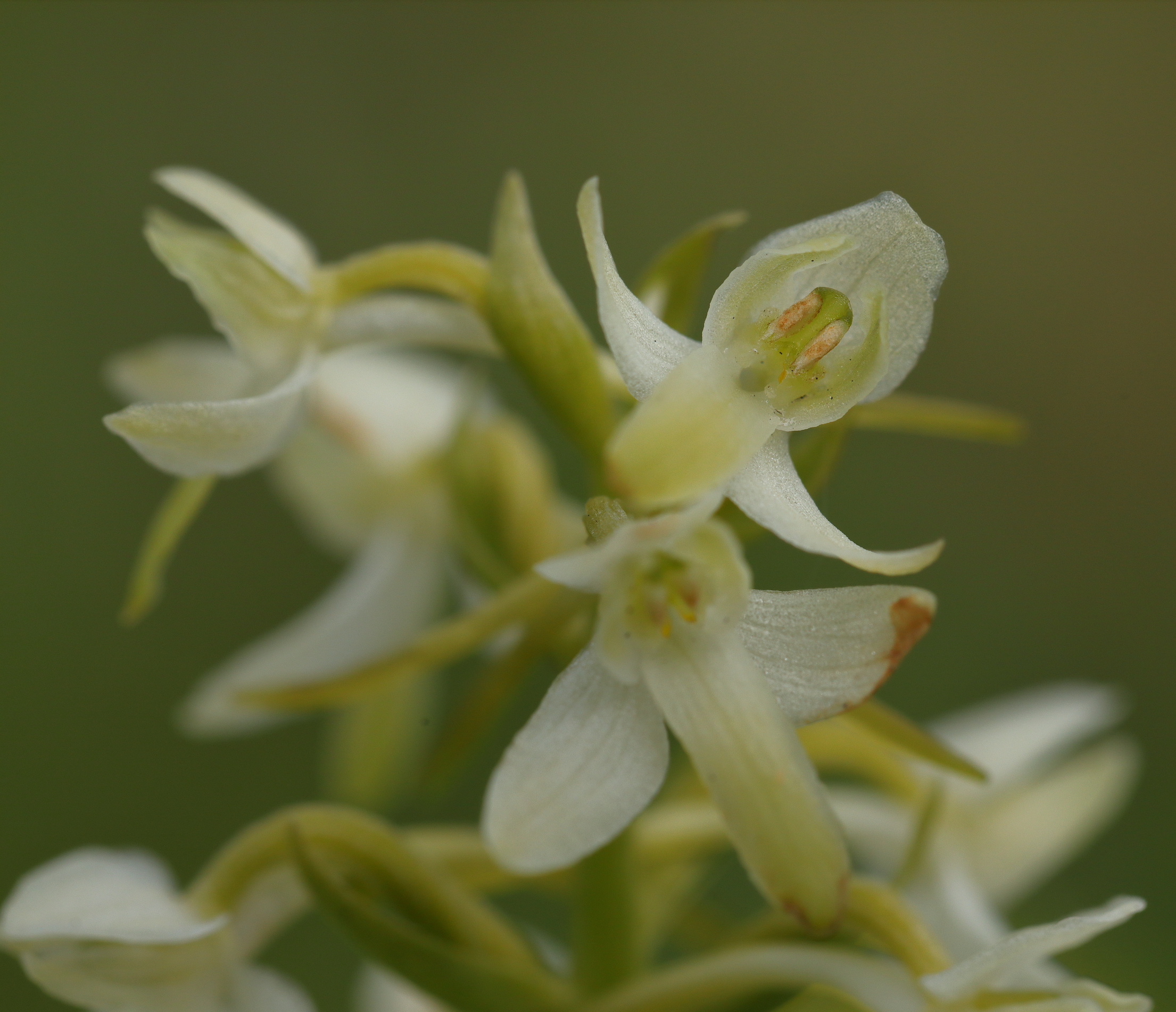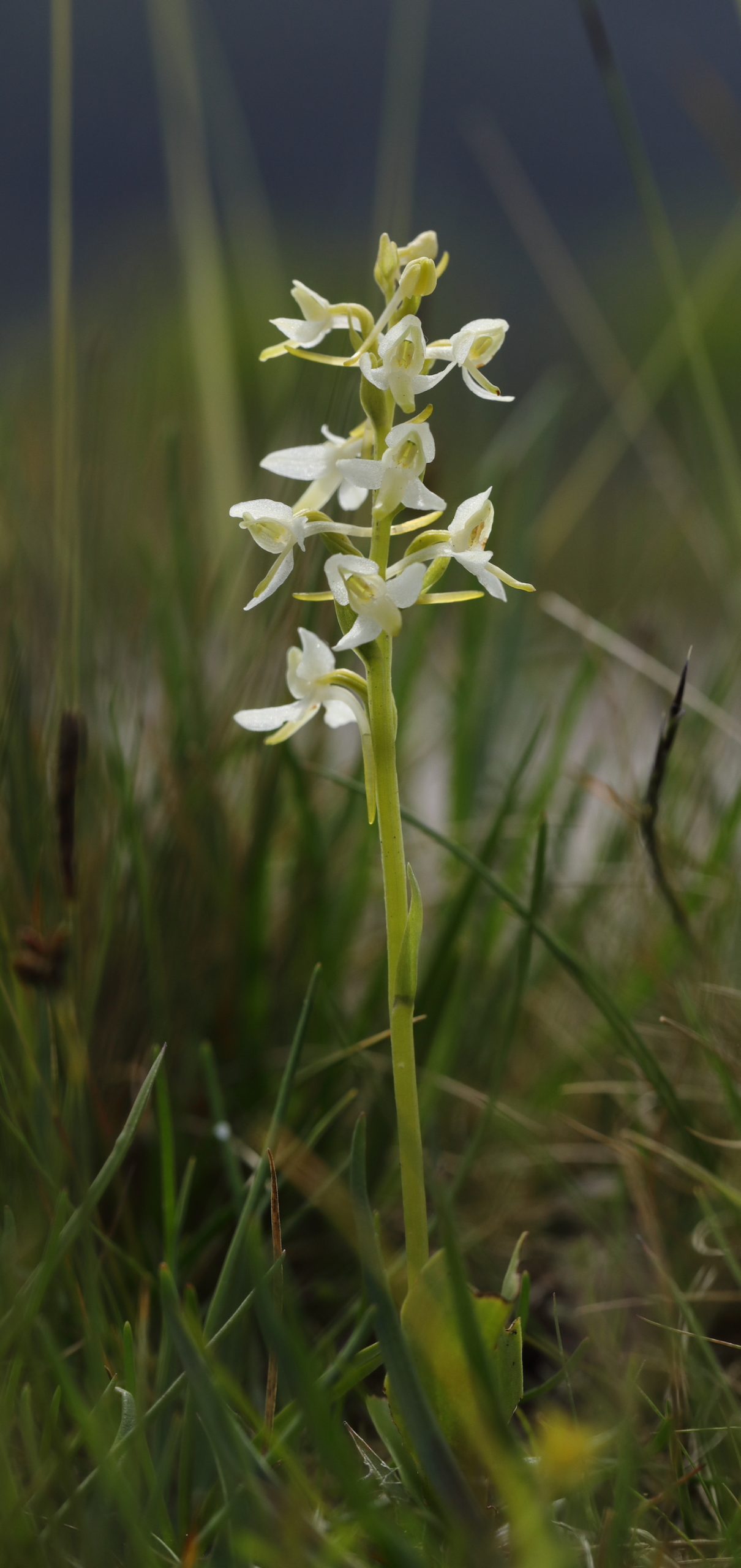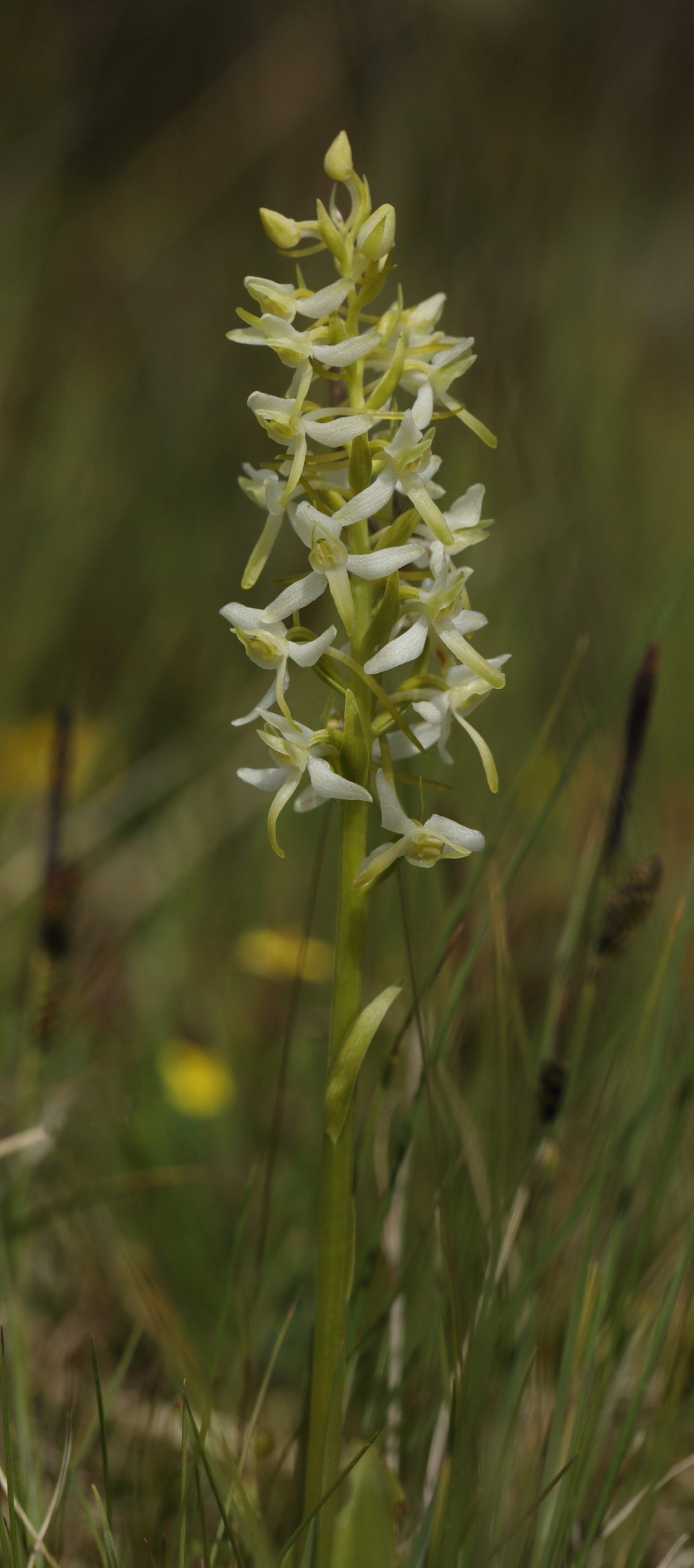Orchids are one of our most colourful and fragrant wildflowers. They appear in a myriad of species, colours, sizes and smells! The orchid relies heavily on pollinators such as bees, wasps and flies for distribution. Insects are enticed with the reward of nectar. The colour, shape, or fragrance of the flower also help to entice. Because orchids employ complex and deceptive strategies to achieve pollination, success can be more limited with certain orchid species. To promote cross-pollination, the pollinia typically are separated from the stigma of the same plant. Once the stigma is fertilized the flower creates seed that eventually is released. Some orchids are rarer than others. The lesser butterfly orchid is a rare flower and listed of the Scottish Biodiversity list of species of principal importance for biodiversity conservation. It has small white flowers that radiate off a single stem, it has a fragrant scent, flowering June and July and can be found on grasslands in the north west of Scotland.
With thanks to David Haines for the last three pictures in the series to the left.
Action Needed
- Ensure the next Scottish Biodiversity Strategy recognises the rich and fertile biodiverse landscapes of North-West Scotland.
- Support rural incentives for land management that provide healthy soils and benefit wildflowers, including wild orchids, in areas that have experienced over-grazing in the past.
- Support measures for reducing over-grazing pressures in Scotland.
- Support investment in outdoor education and junior ranger programmes in North- West Scotland which help children and young adults living in this region to understand the role of wildflowers as part of healthy ecosystems in North-West Scotland.
Threats
A main threat to wild orchids, including the lesser butterfly orchid, is overgrazing which prevents flowering from taking place. As a result, seeds can lie dormant in the soil waiting for land to recover sufficiently for flowering. Another main threat is climate change. Because the orchid relies on specific symbiotic relationships with pollinators and fungi they are particularly at risk from climate change. Climate change brings extreme weather such as long drought periods and colder springs. These climatic changes affect bumblebees and flowering plants. Man-made fires are also a threat and can wipe out populations. Small isolated populations in fragmented habitats are more at risk from man-made fires than those that are part of larger, connected habitats.
MSP Nature Champion

Maree Todd
Member for: Caithness, Sutherland and Ross
Region: Highlands and Islands
Party: Scottish National Party

